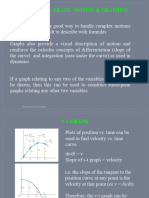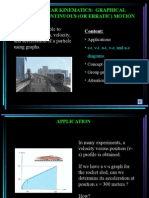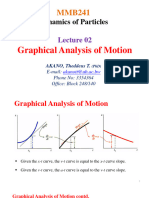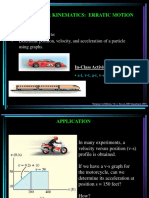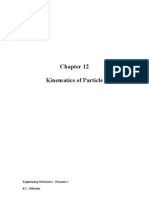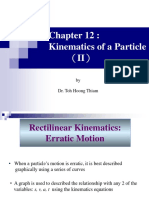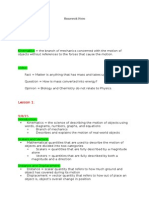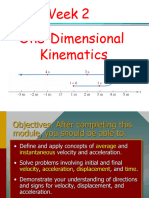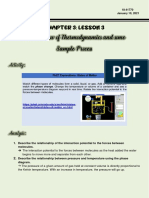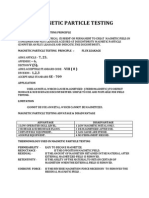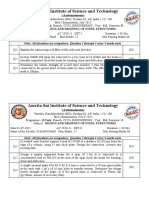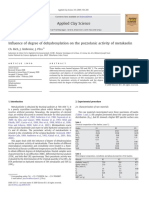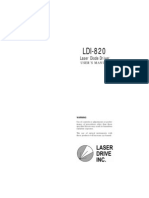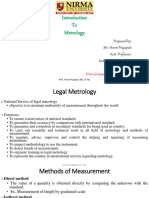0% found this document useful (0 votes)
20 views37 pagesLecture Note 13
The lecture focuses on the kinematics of a particle, particularly erratic motion, and how to analyze position, velocity, and acceleration using graphs. It emphasizes the importance of graphical representation in understanding complex motions and the relationships between different kinematic quantities. Various types of graphs, such as position-time, velocity-time, and acceleration-time graphs, are discussed along with their applications in problem-solving.
Uploaded by
Siwakorn KheangtongCopyright
© © All Rights Reserved
We take content rights seriously. If you suspect this is your content, claim it here.
Available Formats
Download as PDF, TXT or read online on Scribd
0% found this document useful (0 votes)
20 views37 pagesLecture Note 13
The lecture focuses on the kinematics of a particle, particularly erratic motion, and how to analyze position, velocity, and acceleration using graphs. It emphasizes the importance of graphical representation in understanding complex motions and the relationships between different kinematic quantities. Various types of graphs, such as position-time, velocity-time, and acceleration-time graphs, are discussed along with their applications in problem-solving.
Uploaded by
Siwakorn KheangtongCopyright
© © All Rights Reserved
We take content rights seriously. If you suspect this is your content, claim it here.
Available Formats
Download as PDF, TXT or read online on Scribd
/ 37


